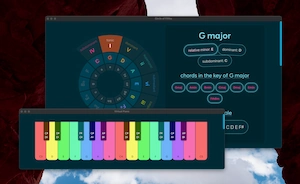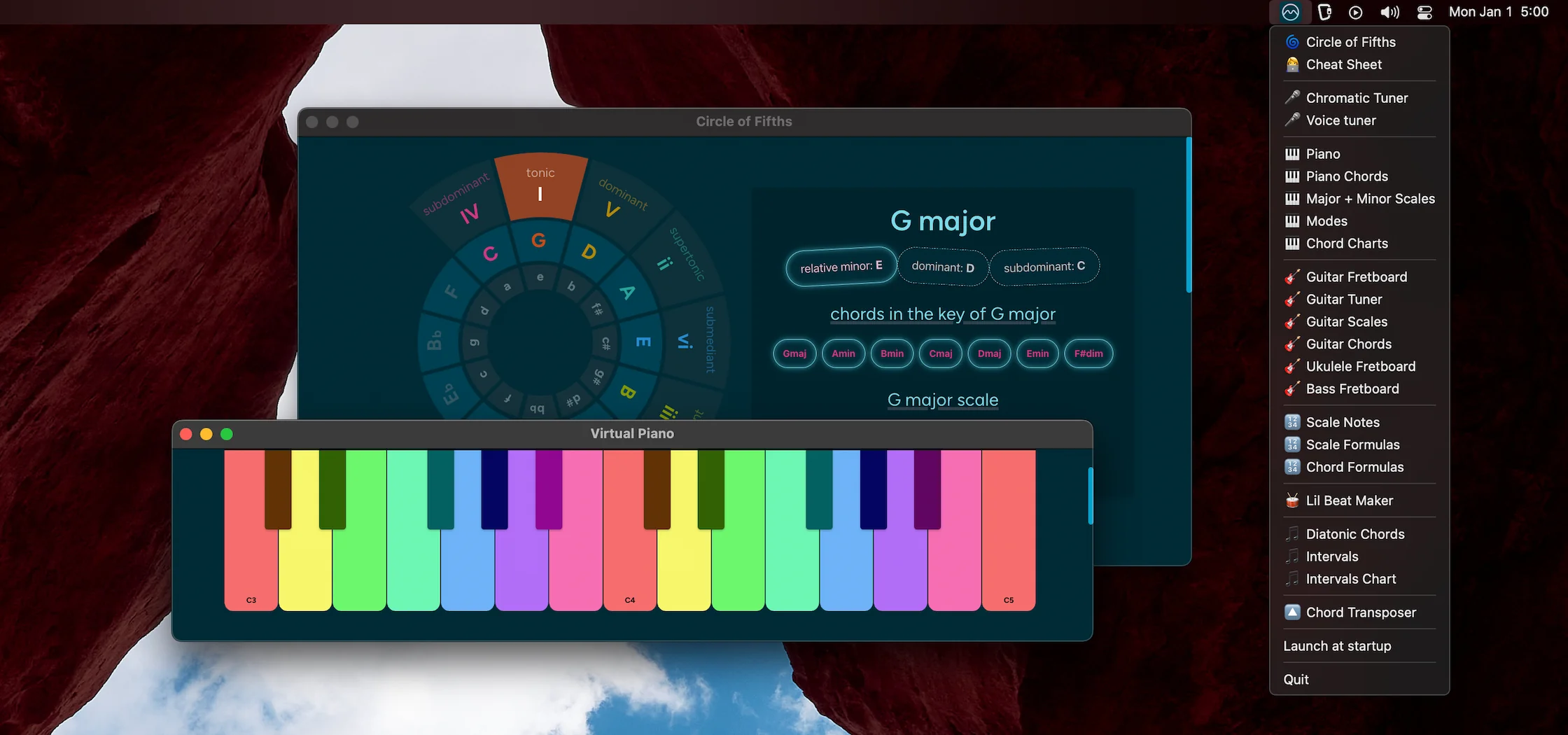Solfege Chart: Practice Your Solfege Syllables in Different Keys
🎵 Solfege in music, also known as solfeggio, is a method for
teaching and learning musical pitches and scales using specific syllables like
Do, Re, Mi for each note. Solfege comes in two
main forms: fixed Do and
movable Do.
🧱 Fixed Do assigns a permanent syllable to
each pitch (Do is always C), making it consistent across all
musical keys.
🌬️ Movable Do, on the other hand, adapts to
the key of the piece; here, Do always represents the root note of the scale,
changing with each key.
🌈 There's also chromatic solfege, which
extends the basic solfege syllables to include all notes of the
chromatic scale. This involves adding
modifiers to the traditional syllables to account for sharps and flats. For
example, a raised "Do" becomes "Di" and a lowered "Re" becomes "Ra."
👀👂 This interactive tool makes it easy to visualize, sing and hear the tones
of the solfege syllables. You can toggle the chromatic solfege and you can
also change the tonic for a movable Do. Click on any of the bars to hear a
tone of a particular solfege syllable.
⌨️ You can control the tool using a computer keyboard using keys 1 through 8
for the solfege scale or 1 through backspace (the full number's bar on a
keyboard) for the full chromatic solfege (all 12 tones).
Fixed Do versus movable Do Solfege
Fixed Do is more common in countries where music notation is named after the solfege syllables. Movable Do is prevalent in English-speaking countries and those where music education emphasizes the relative pitch and harmonic functions.
Here are some more details about both systems:
Fixed Do Solfege:
In fixed Do, each solfege syllable is permanently tied to a specific pitch. For instance, Do is always the pitch C, Re is always D, and so forth, regardless of the musical key. This system is similar to the Western note-naming convention.
Pros of fixed Do Solfege:
- Consistency: It provides a consistent framework, as the syllables always correspond to the same pitches.
- Sight-Reading: It's particularly useful for sight-reading and for understanding absolute pitch relationships in music. (Think perfect pitch)
- Multi-Lingual: Fixed Do is beneficial in multi-lingual contexts, where the note names might vary, but the solfege remains constant.
Movable Do Solfege:
In movable Do, the syllable "Do" represents the root of the scale in whichever key the music is written. For example, in the key of G major, G is "Do," A is "Re," and so forth. The syllables shift depending on the key.
Pros of movable Do Solfege:
- Harmonic Understanding: It emphasizes the relationship between notes in a scale, aiding in the understanding of music theory and harmony.
- Adaptability: Movable Do adapts to any musical key, making it versatile for different musical pieces.
- Ear Training: It's particularly effective for relative pitch ear training, as it focuses on the function of each note within a scale.
Chromatic Alterations in Both Systems:
Fixed Do: Chromatic notes are typically named by adding a suffix to the base syllable, like "C#" becoming "Di" (an alteration of "Do").
Movable Do: Chromatic alterations are similar, but they adjust relative to the key. For example, in C major, "C#" is "Di," but in D major, "C#" would be "Ra" (a lowered "Re").



